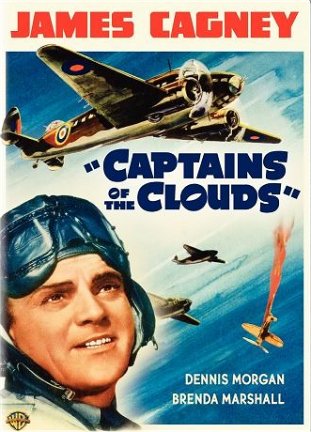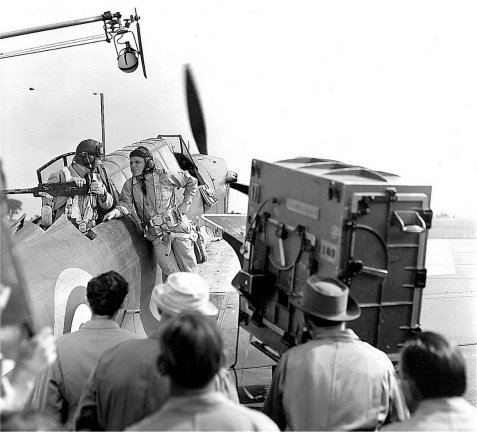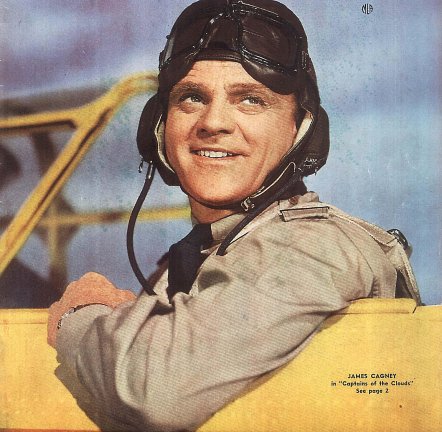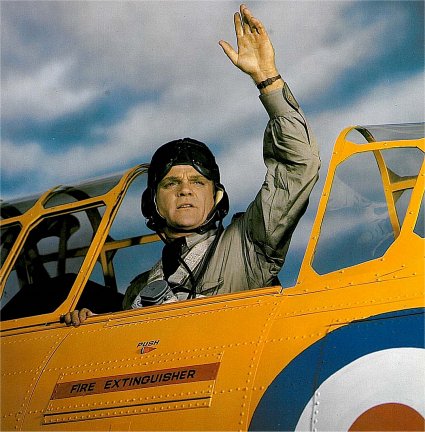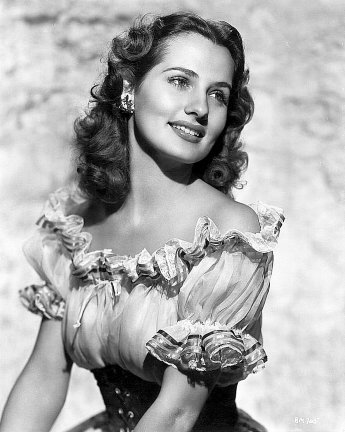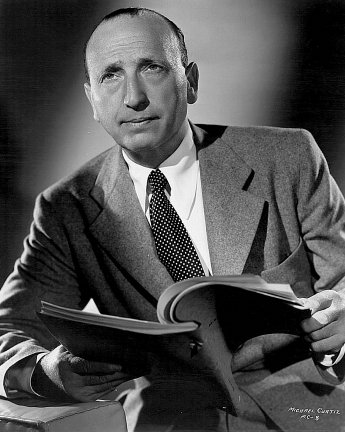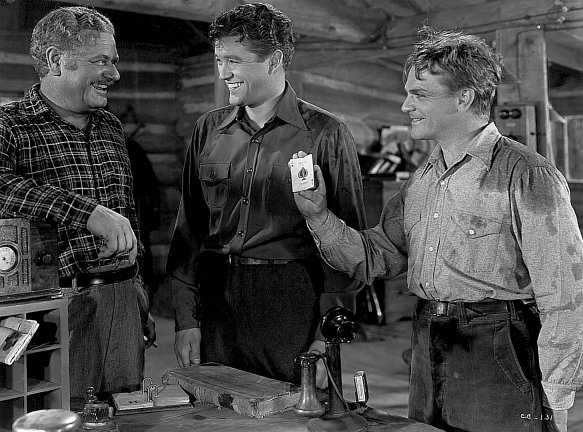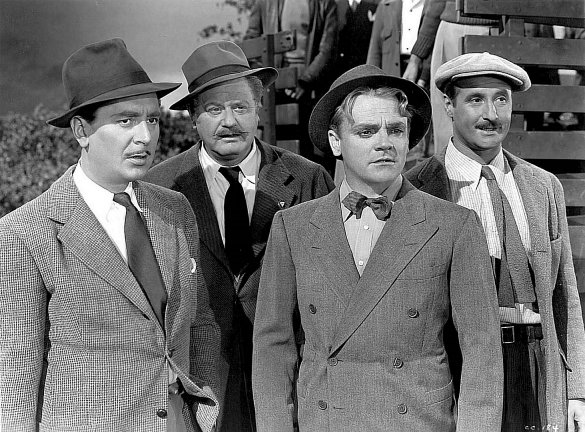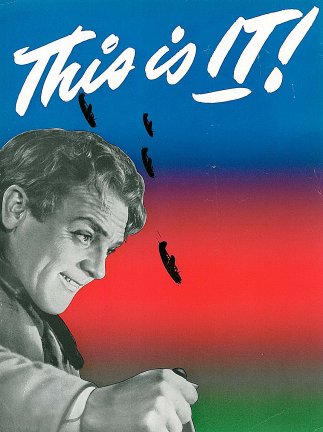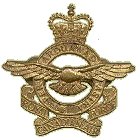Captains of the Clouds sprang from a magazine
story called "Bush Pilots" which Canadian actor Raymond Massey had brought
to Warner Bros. producer Hal Wallis's attention. Cagney disliked the script,
but was persuaded to do the film by Jack Warner, who told him that he would
be contributing to the war effort by accepting the role. Cagney relented,
but only on the condition that his brother Bill be the line producer. The
film is filmed in glorious three-strip Technicolor. From the richly
hued countryside to the brilliant yellow-and-brown schemes of countless
RCAF bi-wing Finch, Yale, Harvard and Anson training planes to the A-l7As
and Lockheed Hudsons, this film is a true visual wonder.
Captains of the Clouds was an exceptionally
challenging and difficult picture to make. Wallis wrote in his memoirs
that the film "proved to be by far the most extensive and difficult venture
in location work undertaken by Warners since the silent period." Most of
the film was shot amid the lush greenery of prewar Canada around North
Bay, Trenton and Ottawa. With difficult wartime conditions, the hotels
in these areas were booked, and the crew had to be housed in rather primitive
conditions and later in an army camp - with army food. "They grumbled loud
and long," recalled Wallis, "and twice we came close to a strike on the
picture."
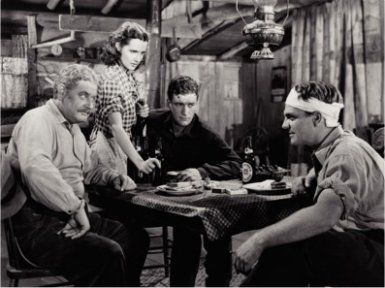 The
story follows the trials of a group of established bush pilots, "Tiny"
Murphy (Hale), Blimp Lebec (Tobias), and Scrounger Harris (Gardiner), led
by Johnny Dutton (Dennis Morgan), who attempt to foil the job-stealing
and rate-cutting ways of recent arrival Brian MacLean (James Cagney). When
MacLean is hit on the head with his own prop and rescued (pulled out of
the water) by Dutton's girl friend Emily (Brenda Marshall), Dutton flies
through fog and risks his life landing at night to retrieve a doctor for
him. This begins an agreement, more than a friendship, between Dutton,
Tiny, and MacLean which leads them to work together transporting explosives
and other supplies to northern mines. MacLean, concerned that Dutton’s
plans to marry Emily will cause his financial ruin, beats him to the punch.
MacLean takes Emily to Ottawa with his bankroll, where he weds her to keep
her from destroying Dutton’s plans to start an airline. Dutton goes to
Ottawa where he punches out MacLean and then gives his $4,000 to charity
before leaving to join the RCAF.
The
story follows the trials of a group of established bush pilots, "Tiny"
Murphy (Hale), Blimp Lebec (Tobias), and Scrounger Harris (Gardiner), led
by Johnny Dutton (Dennis Morgan), who attempt to foil the job-stealing
and rate-cutting ways of recent arrival Brian MacLean (James Cagney). When
MacLean is hit on the head with his own prop and rescued (pulled out of
the water) by Dutton's girl friend Emily (Brenda Marshall), Dutton flies
through fog and risks his life landing at night to retrieve a doctor for
him. This begins an agreement, more than a friendship, between Dutton,
Tiny, and MacLean which leads them to work together transporting explosives
and other supplies to northern mines. MacLean, concerned that Dutton’s
plans to marry Emily will cause his financial ruin, beats him to the punch.
MacLean takes Emily to Ottawa with his bankroll, where he weds her to keep
her from destroying Dutton’s plans to start an airline. Dutton goes to
Ottawa where he punches out MacLean and then gives his $4,000 to charity
before leaving to join the RCAF.
War breaks out and, inspired by a radio broadcast of Winston
Churchill's famous "We will never surrender!" speech, MacLean and
his fellow bush pilots decide to enlist in the RCAF to join the conflict.
They fly their planes onto an airbase, thinking their services are invaluable,
only to later find out that, despite their vastly superior flying hours,
they're too old for combat, but that their skills are needed as instructors.
To his frustration MacLean finds that Dutton is his commanding officer.
Too old for combat, the group settles for instructor jobs in the Commonwealth
Air Training Plan. At the end of the training period, after numerous bouts
of insubordination, MacLean is given his first real RCAF assignment: the
shepherding of bomber planes across the Atlantic to England. MacLean comes
to realize the true importance of his job when the flight is attacked by
Nazi raider planes. In the final reel MacLean redeems himself by saving
the other bombers in the formation by ramming his Hudson bomber into an
attacking German Messerschmitt 109 fighter (actually a Hurricane with Nazi
insignias).
Reviews of the film were mixed, but critics raved over
the sensational aerial scenes and the documentary-like representation of
the BCATP. TIME said, "Although Cagney is much better than his thankless
role, the real heroes of Captains are director Michael Curtiz and his five
cameramen, who caught the matchless greens and browns of Canada's infinite
north-country." The film begins as a typical Warner Bros. adventure, becomes
a military training story with an almost documentary feel, and ends in
combat.
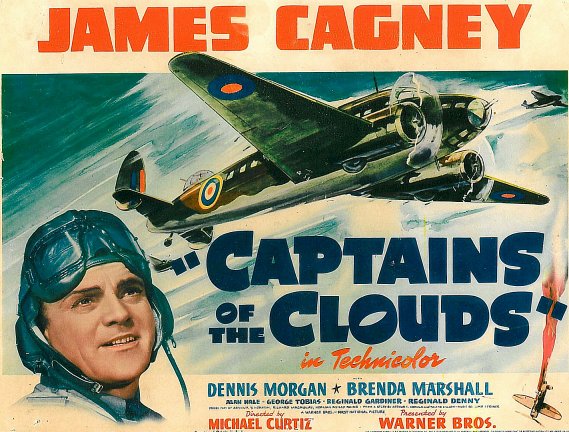
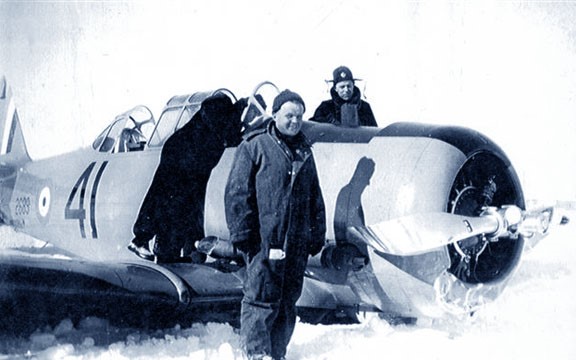 .
.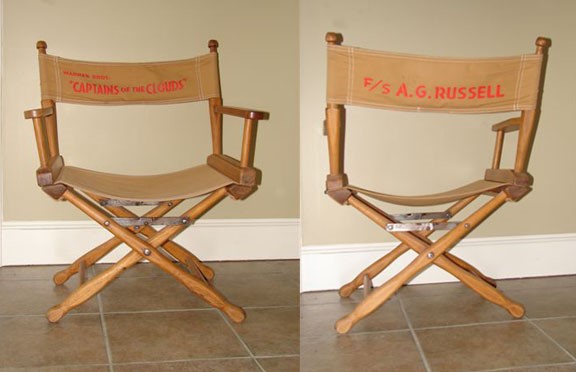
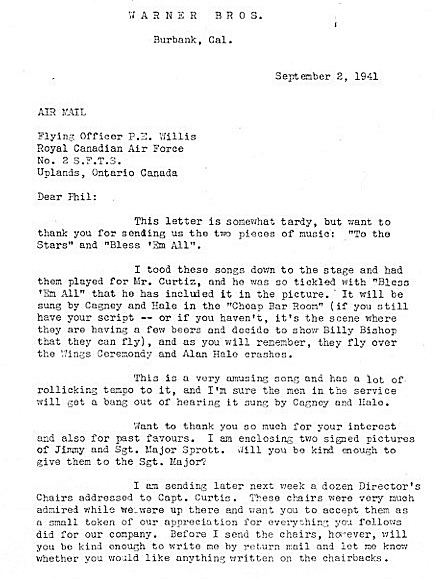
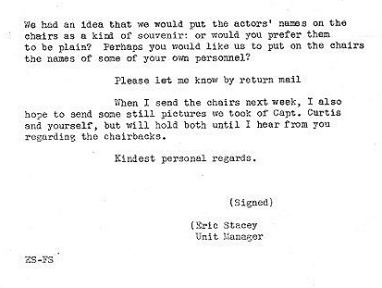
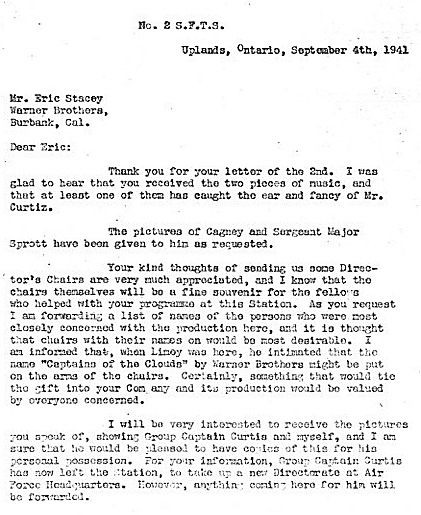
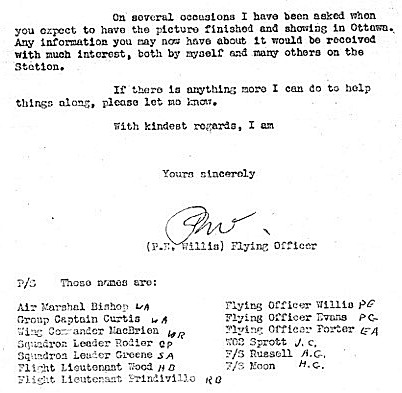
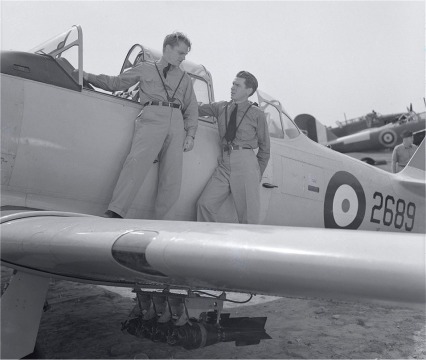
 The
story follows the trials of a group of established bush pilots, "Tiny"
Murphy (Hale), Blimp Lebec (Tobias), and Scrounger Harris (Gardiner), led
by Johnny Dutton (Dennis Morgan), who attempt to foil the job-stealing
and rate-cutting ways of recent arrival Brian MacLean (James Cagney). When
MacLean is hit on the head with his own prop and rescued (pulled out of
the water) by Dutton's girl friend Emily (Brenda Marshall), Dutton flies
through fog and risks his life landing at night to retrieve a doctor for
him. This begins an agreement, more than a friendship, between Dutton,
Tiny, and MacLean which leads them to work together transporting explosives
and other supplies to northern mines. MacLean, concerned that Dutton’s
plans to marry Emily will cause his financial ruin, beats him to the punch.
MacLean takes Emily to Ottawa with his bankroll, where he weds her to keep
her from destroying Dutton’s plans to start an airline. Dutton goes to
Ottawa where he punches out MacLean and then gives his $4,000 to charity
before leaving to join the RCAF.
The
story follows the trials of a group of established bush pilots, "Tiny"
Murphy (Hale), Blimp Lebec (Tobias), and Scrounger Harris (Gardiner), led
by Johnny Dutton (Dennis Morgan), who attempt to foil the job-stealing
and rate-cutting ways of recent arrival Brian MacLean (James Cagney). When
MacLean is hit on the head with his own prop and rescued (pulled out of
the water) by Dutton's girl friend Emily (Brenda Marshall), Dutton flies
through fog and risks his life landing at night to retrieve a doctor for
him. This begins an agreement, more than a friendship, between Dutton,
Tiny, and MacLean which leads them to work together transporting explosives
and other supplies to northern mines. MacLean, concerned that Dutton’s
plans to marry Emily will cause his financial ruin, beats him to the punch.
MacLean takes Emily to Ottawa with his bankroll, where he weds her to keep
her from destroying Dutton’s plans to start an airline. Dutton goes to
Ottawa where he punches out MacLean and then gives his $4,000 to charity
before leaving to join the RCAF.
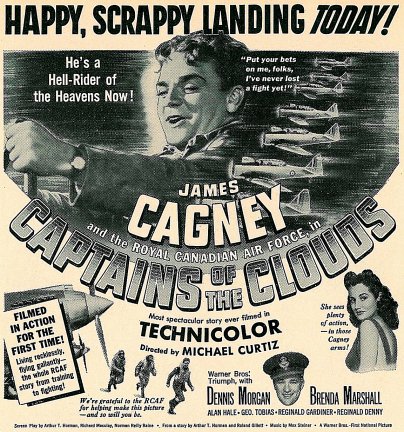
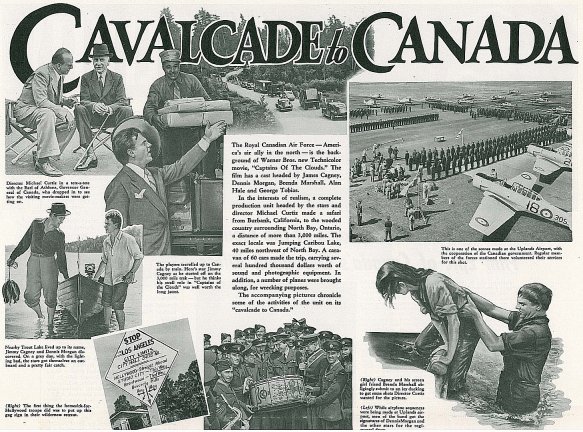
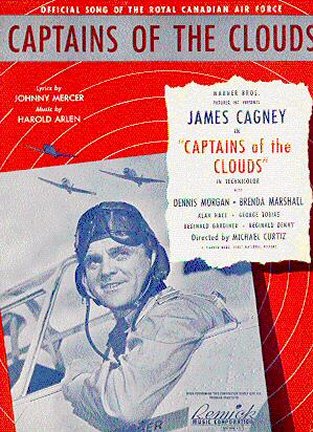 "Captains
of the Clouds" (1942) Music by Harold Arlen ~ Lyrics by Johnny Mercer
"Captains
of the Clouds" (1942) Music by Harold Arlen ~ Lyrics by Johnny Mercer
